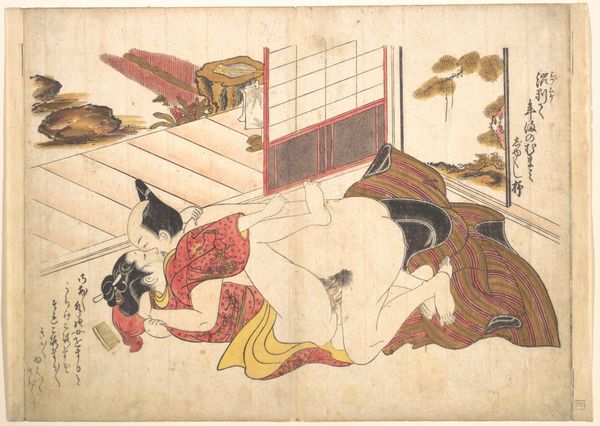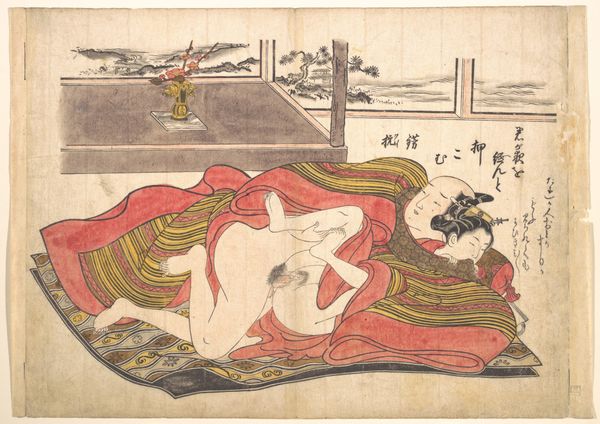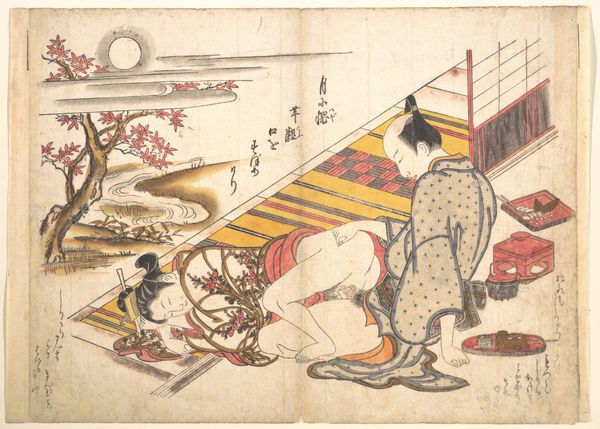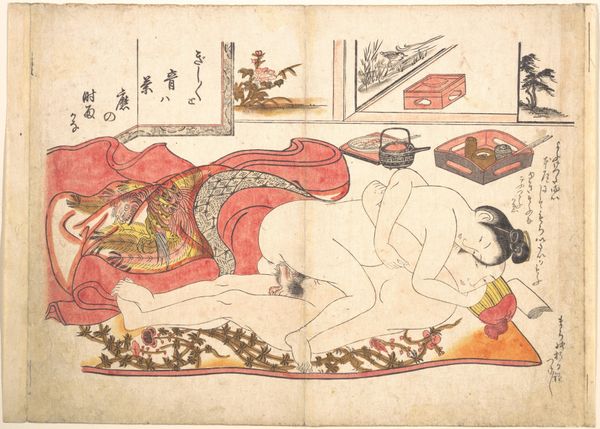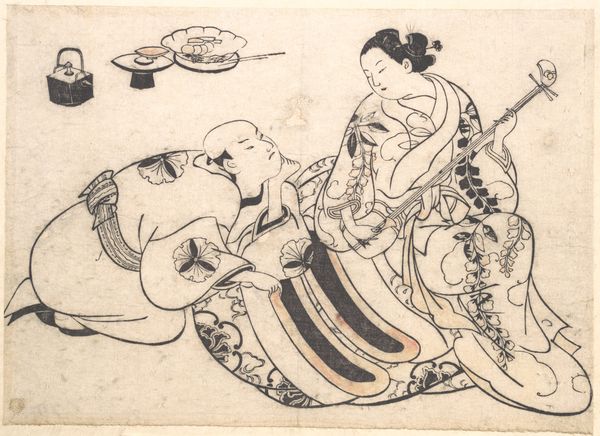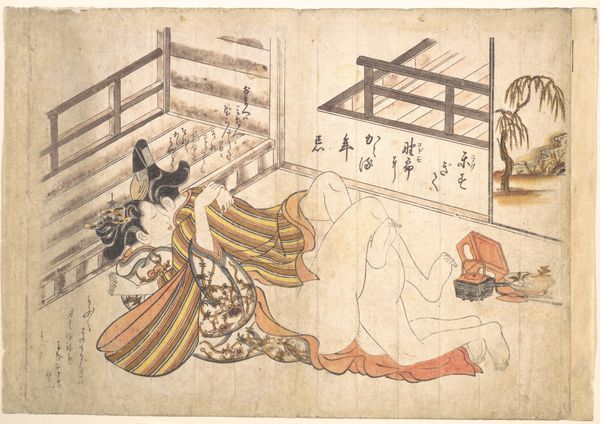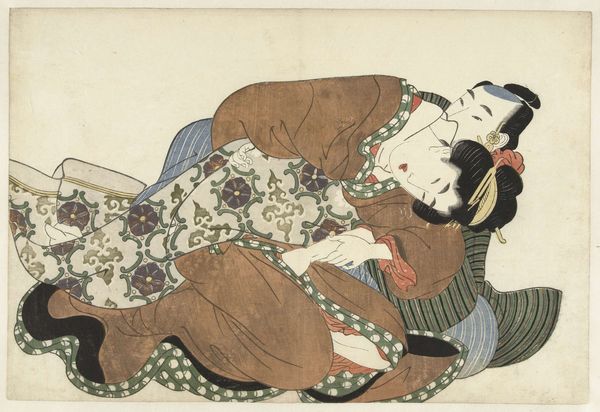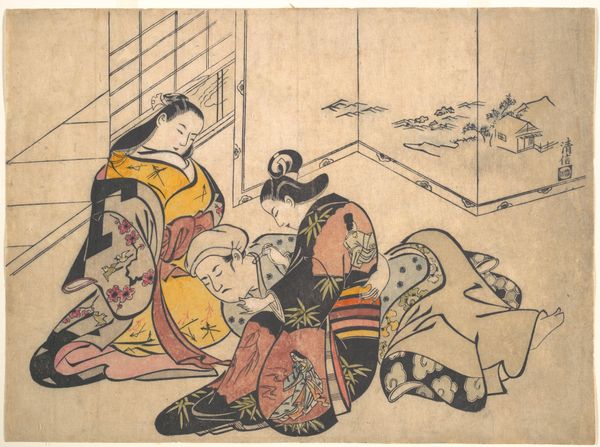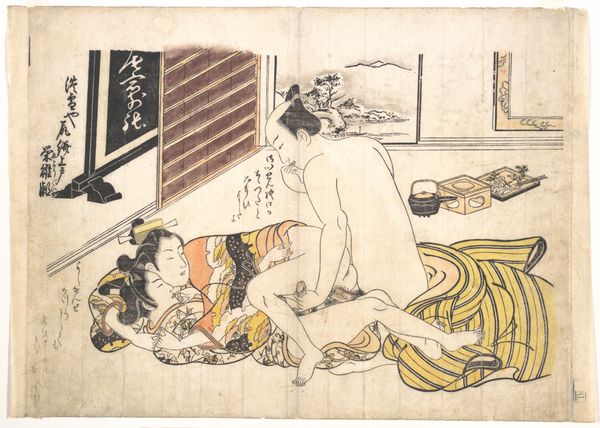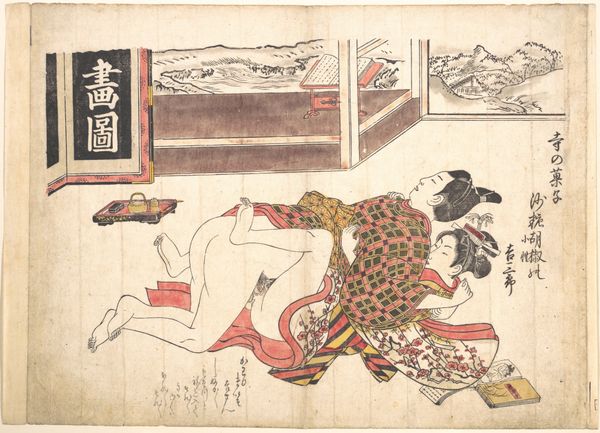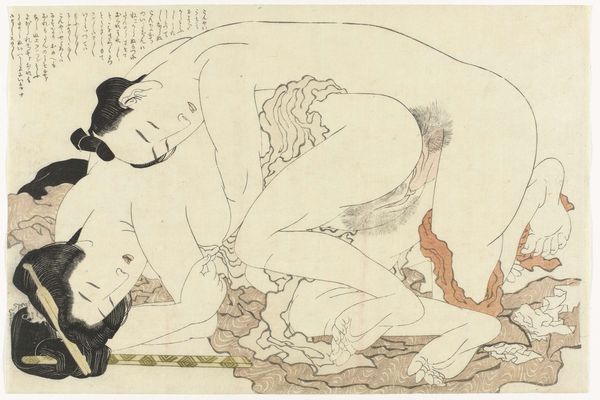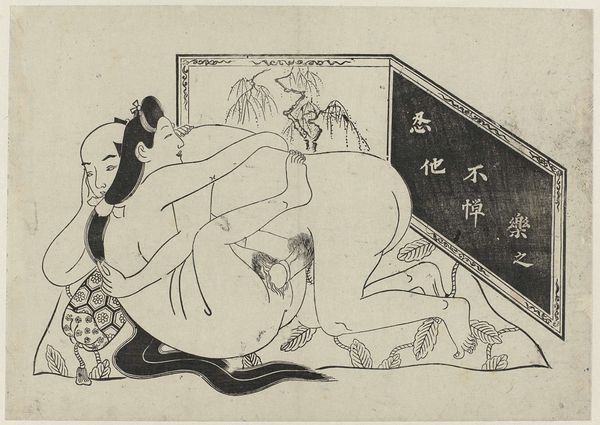
drawing, print, ink
#
drawing
# print
#
pen sketch
#
asian-art
#
ukiyo-e
#
ink
#
nude
#
erotic-art
Dimensions: 10 3/4 x 15 1/4 in. (27.3 x 38.7 cm)
Copyright: Public Domain
Editor: Okumura Masanobu's "Bedroom Scene," a print created sometime between 1729 and 1749, feels surprisingly intimate for a work that's intended for public consumption. There's this contrast between the very private act depicted and the world outside glimpsed through the windows. What do you make of that juxtaposition? Curator: It's a powerful tension, isn’t it? Consider Ukiyo-e in its socio-political context. These “pictures of the floating world” often depicted pleasure quarters and celebrated transient beauty, reflecting a desire for escape from rigid societal norms. How do you see this print engaging with, or perhaps challenging, those norms? Editor: Well, showing something so explicitly sexual feels like a challenge, but the presence of Mount Fuji in the background feels traditional. Curator: Exactly. Think about the gaze here. Who is this work really for? Is it a celebration of pleasure, or is it more complicated? Does the artist normalize these acts, or potentially commodify the people in the image? And how does class or status influence the creation and consumption of these images? Editor: So you are thinking about the political and social forces that influence the creation and interpretation of this art. It’s not just a bedroom scene, it’s a statement. Curator: Precisely! Art isn’t created in a vacuum. Analyzing how power, representation, and desire intersect in seemingly simple images like this is key. These works act as cultural mirrors, reflecting and shaping societal views of sexuality and gender. This particular print, like many, reveals a narrative, and perhaps we can use the term resistance too, about a particular time. Editor: That really gives me a new way of considering what this work might represent, especially thinking about how it was consumed then, and how we interpret it now. Curator: I hope this discussion offers all the viewers new lenses for critical analysis of not only this work, but all art.
Comments
No comments
Be the first to comment and join the conversation on the ultimate creative platform.
